Setting up Google Drive for Desktop (File Stream)
Note: Drive for Desktop was previously called Google File Stream and still is currently on Macs (changed 2-4-2021).
Before using as a backup solution, please read the warning note at the bottom of the page.
If already have Google Drive for Desktop installed but need to get to its settings, see below.
Setting up Google Drive for Desktop
Once you've downloaded the installer (located here), open it to begin installation.

You can choose to create shortcuts to the Drive and to Google's apps.
Select Install and then sign in with your NMU email and password.

If you have 2fa setup on your NMU gmail account, you will be prompted to provide authorization similar to below.
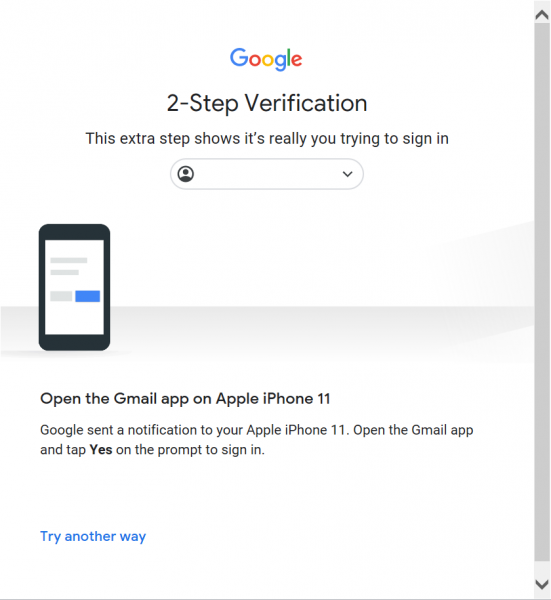
After that, Google Drive for Desktop will be setup. You may get a Splash screen afterwards. If you proceed to its final slide, there will be a button to open your Google Drive.
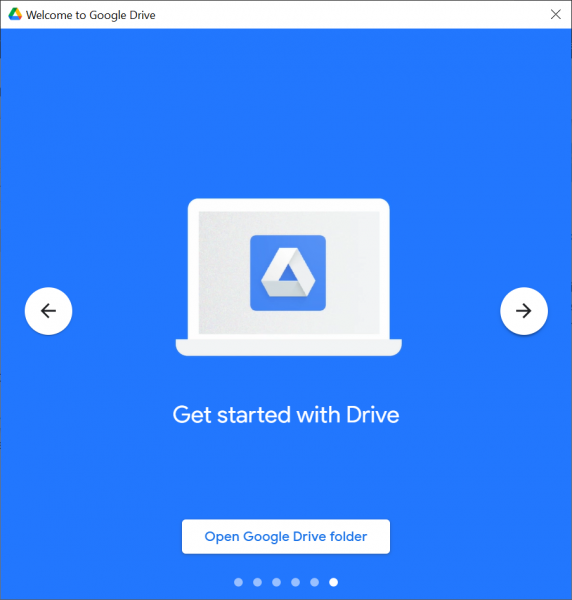
If you click on the button or open a File Explorer window, you will find it in your quick access and/or further down where the Drives are listed. By default, it will be assigned G: but that can be changed in preferences if you prefer.

You will notice both your My Drive and Shared Folders are inside and can open either one.
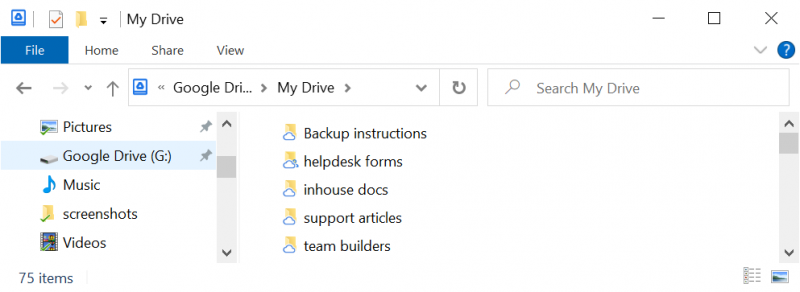
Note: the files in your G: drive are not stored on your computer. They will be streamed from Google's cloud and so you will need internet access to interact with them. It will cache whatever file you are working with on your computer, and should you lose connection, it will attempt to resync any changes made afterward. If you are using Google Docs in Chrome, you can get an extension that enables you to work offline on files.
Settings
To get to Drive for Desktop's settings, go the system tray and click on the Google Drive symbol.
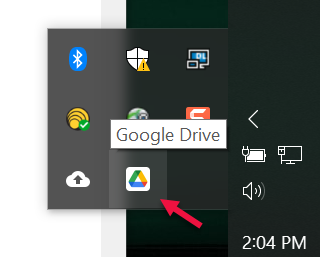
Click on the gear symbol and then Preferences.
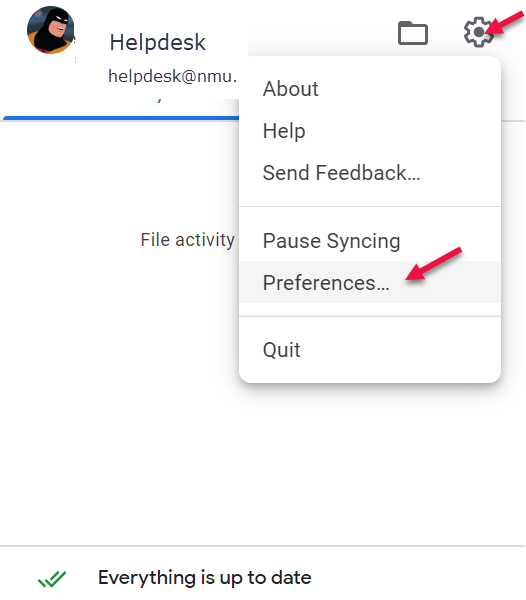
Here you can change the drive letter to something other than G or switch accounts if want to access another google account's drive. There are few other settings but as Google adds features, there will be more options in here.

Copying files to Google Drive for a temporary backup or to move to a new computer
Once Google Drive for Desktop is setup, you can copy any files over from your computer to the drive. It's as simple as dragging the folder you want copied, into the folder you want inside your G: Drive.
- Open up your user folder found on the Desktop, usually with your name or name used to setup computer. Then open a second folder in File Explorer. You can right-click on the folder icon, and then choose Google Drive G: (or whatever you named your drive).
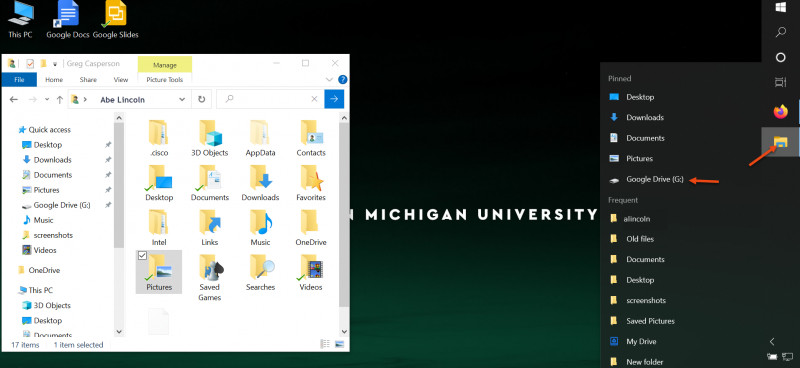
- You should resize the windows so you can drag them to be side-by-side. Then open your My Drive folder. (open Shared Drives if you'll want to put in a shared drive with other co-workers)
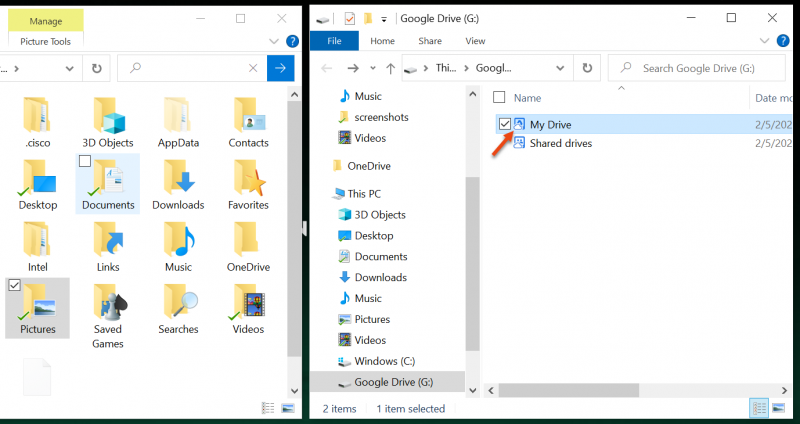
- You can either just copy items into here or you can make a new folder for your files as I do here:
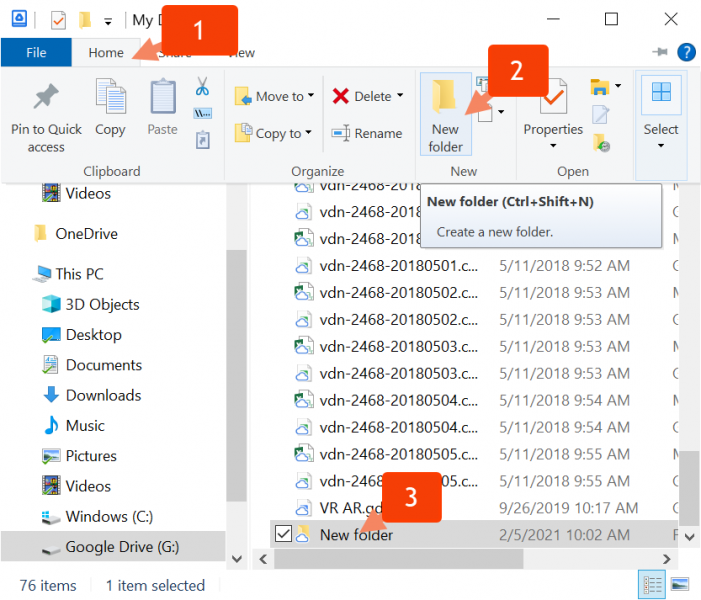
- Name the folder whatever you'd like and open it. Then you can drag folders you want from your user folder to the My Drive folder.
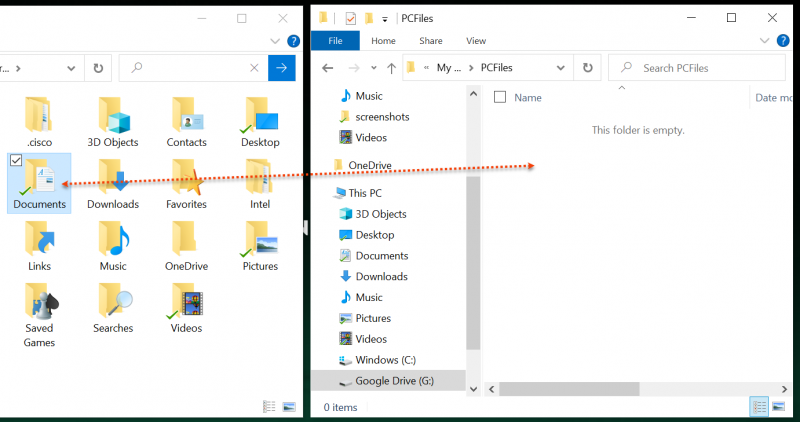
- If you plan on deleting the files on your computer, go the Google Drive preferences and check that it is finished copying the files. If completed, all files will have a time synced under their name and a green checkmark across from it. Otherwise the file will have a progress bar if it hasn't been synced yet.
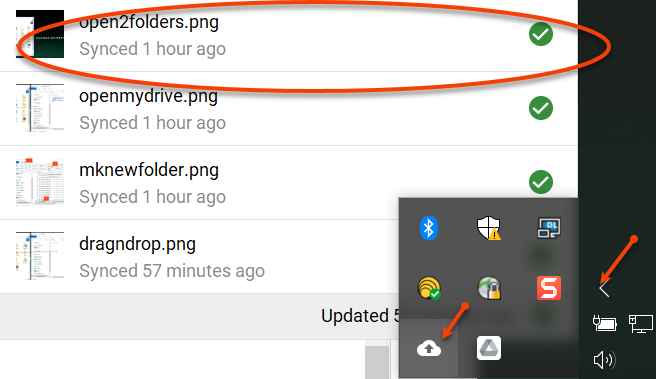
A copy of your files will now be on your hard drive and on your Google Drive. However, these files will not sync. If you make changes to a file in your pc's document folder, it will not change on the Google Drive, or vice versa. That is why this is most useful for a quick backup before a re-image or changing computers. Once your new or re-imaged computer is setup and Google Drive is installed, you can copy files you want back from the Google Drive to the PC.
If using Google Drive to free up hard disk space on your computer.
After you copy all the files you want to your G: Drive and they have finished transferring, you can then delete the files from your computer. You would then work with files from the G: Drive then on. Note: You should verify the files you wanted copied are finished transferring and that you are able to open/work with them before deleting the files from your hard drive (see step 5 above).
Notes on using as a backup solution
Having a copy of your files on both your computer and Google Drive, will allow you to recover or use your files from another computer/device in case you no longer have access to the original computer due to damage or loss. This also works well when re-imaging your computer or switching to a new one. However, it does not provide a backup in the case you accidentally erase a file that you have changed in one drive but not the other--it would only give access to the older version of the file. If you used Google Drive to free up disk space on your hard drive, deleting the copies on your PC, you will only have the version on Google Drive. If you delete it or make changes to it in Google Drive and want to revert, there is no way to do that unless a Google Doc had version tracking. We recommend you also use a backup drive with its provided backup software or a third-party backup solution since those backups are meant to cover just about any issue.
